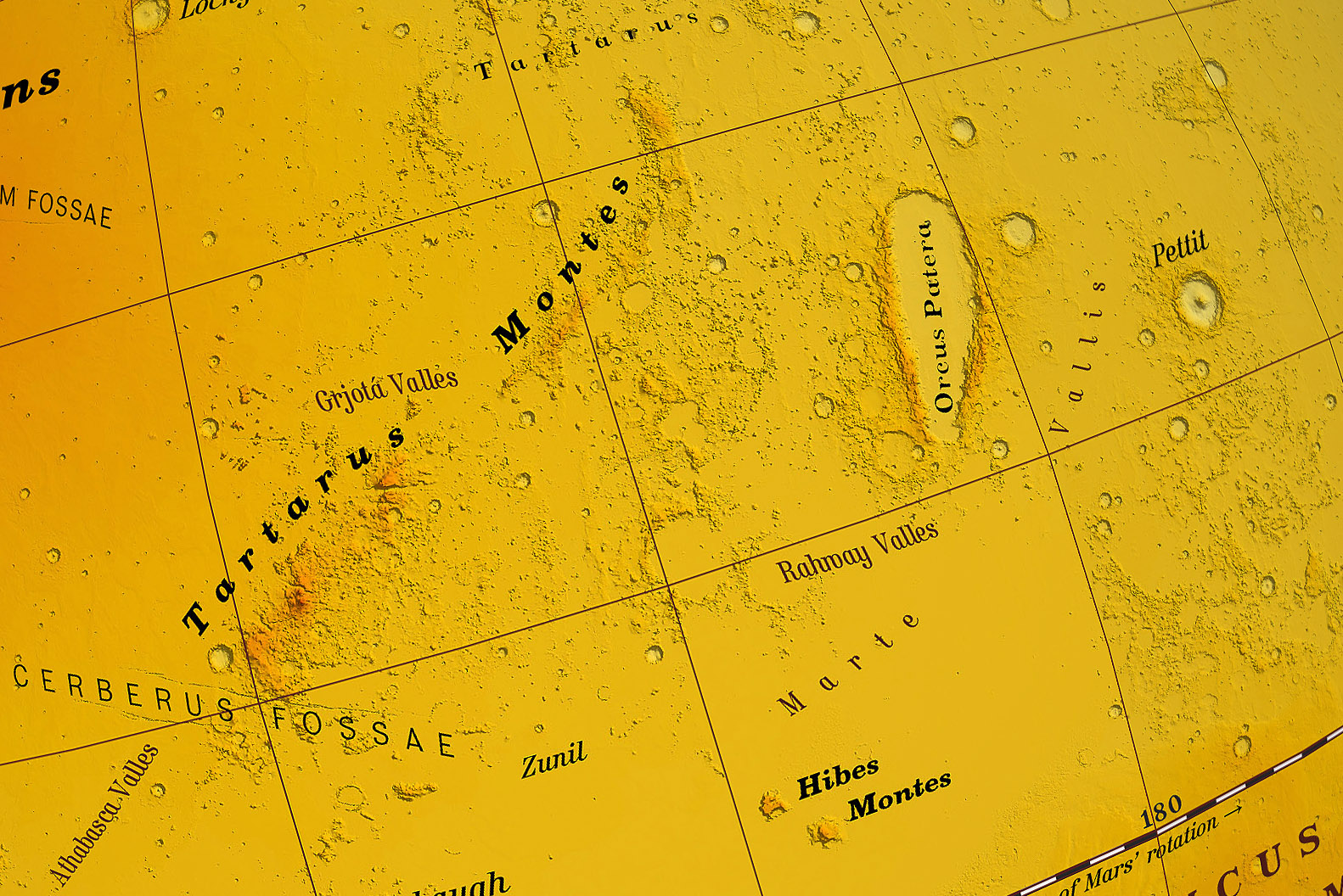Tartarus region

| Origin of name: The deepest part of the underworld. It is a deep, gloomy place, a pit, or an abyss used as a dungeon of torment and suffering that resides beneath the underworld. | A név eredete: Tartarosz a halál utáni életben az örökös kín, a szenvedés és a bűnhődés helye – a kereszténységben a pokolnak felel meg. Lásd még: Elysium |
Geologic description and interpretation: Tartarus Colles cone groups, at the eastern edge of the Elysium rise, reveale a periglacial origin for these landforms. Two of the channels (Athabasca and Marte valles) experienced more than one flood. Emanation from volcanotectonic fissures instead of chaotic terrain distinguishes these Cerberus Plains channels from the larger, older circum-Chryse channels. Groundwater must have collected in a liquid state prior to flood onset to flow at the estimated discharge rates. Lack of large-scale subsidence near the channels' origination points along the Cerberus Fossae indicates that this groundwater was at least several kilometers deep. | Geológiai leírás és magyarázat: A Tartarus Colles periglaciális felszínformákból áll. Völgyei vulkáni lávát és vízet is hordhattak magukban. A síkság maga az egyik legsíkabb terület a Marson. Az Orcus Patera eredete máig vitatott: vagy egy elliptikus becsapódás nyoma, vagy vulkáni eredetű, vagy egy tektonikusan deformált normál kráter. |
 
|